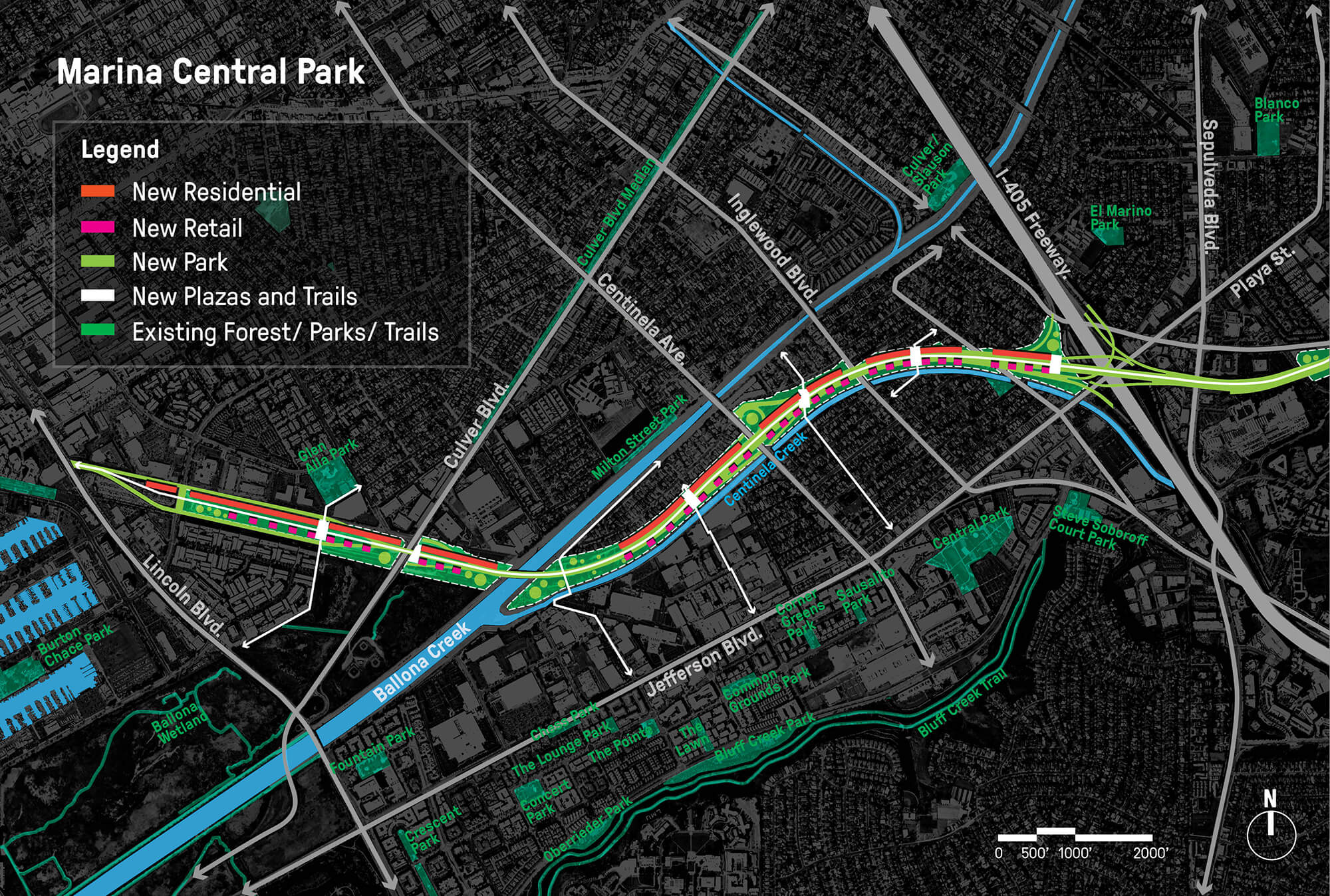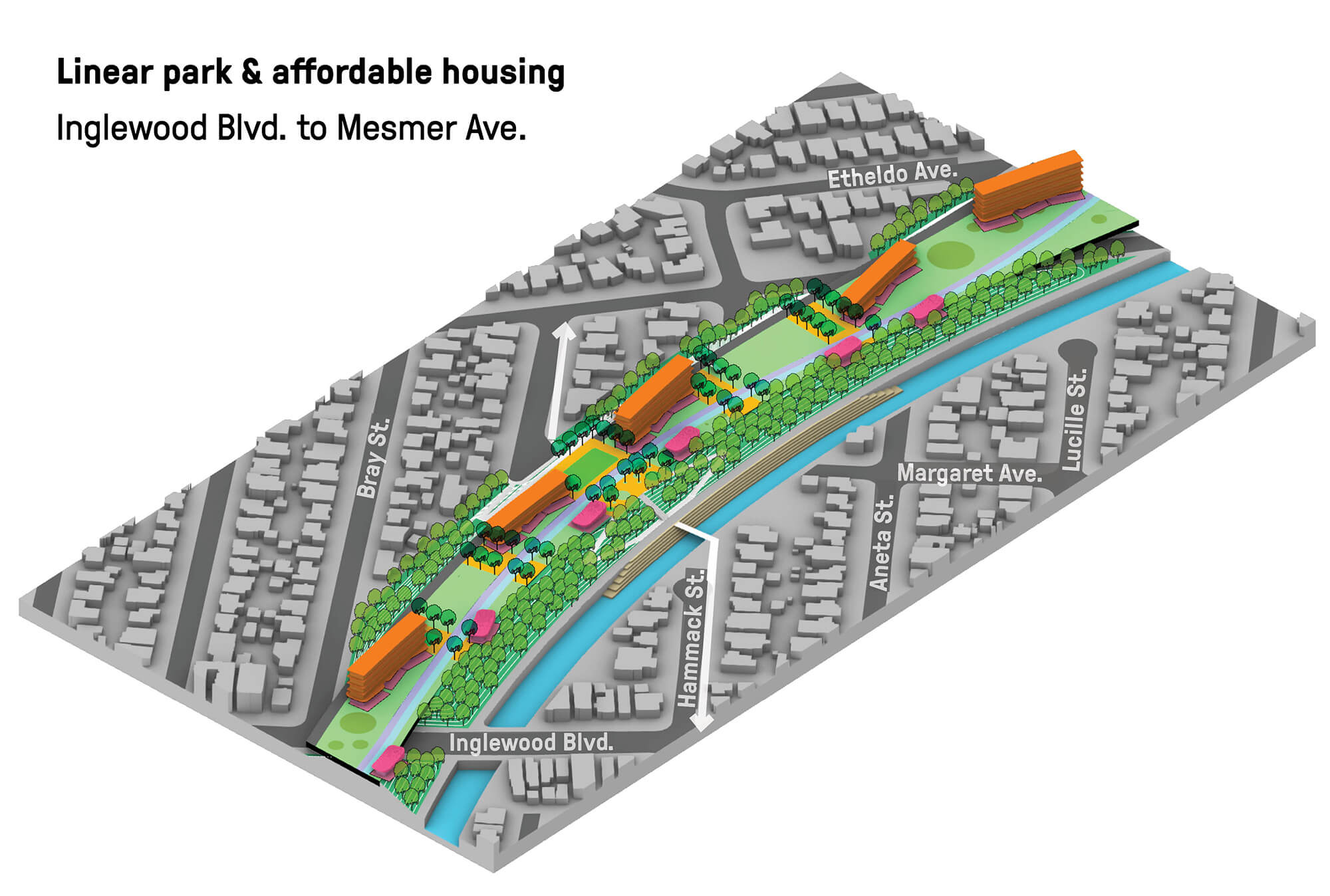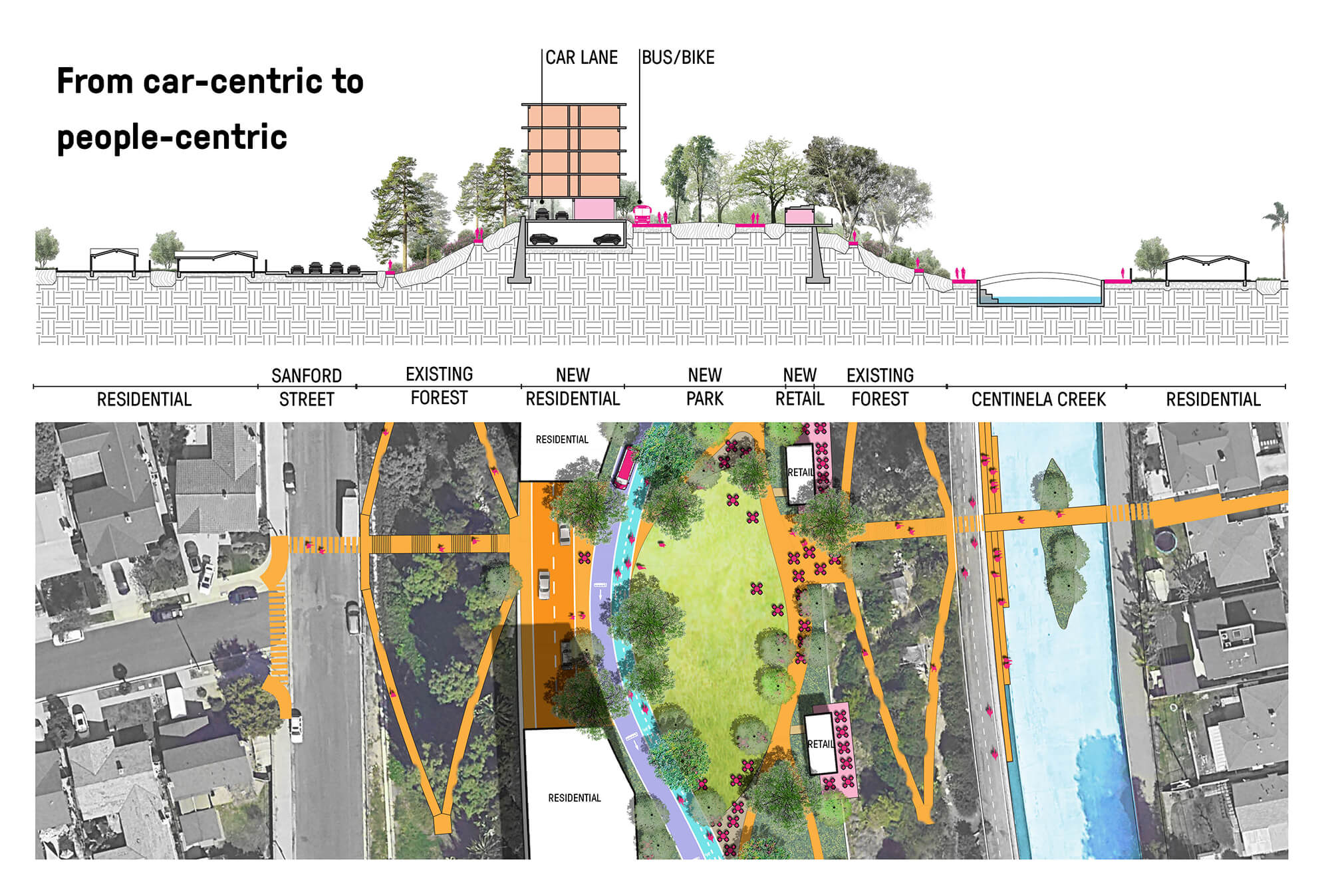By the 1950s, the community of Del Rey, Los Angeles was a thriving home to Mexican- and Japanese-Americans, a place where recent emigres could plant roots. That changed with the construction of the Marina Freeway, a three-mile long stretch of highway completed in the 1970s meant to connect Angelenos to East Anaheim. Like hundreds of working class, communities of color across the country, Del Rey’s heterogeneous, welcoming ecosystem was damaged by the highway which, at present, is the shortest and least utilized freeway in Los Angeles county.
Today, Marina Freeway—informally known by some as the Richard M. Nixon Freeway—bisects Del Rey, injecting it with air and noise pollution, and contributes to the city’s notorious heat island effect. Last September, global landscape architecture SWA and the nonprofit Streets for All announced a bold plan to reverse that damage.

Marina Central Park is a transformative vision by SWA and Streets for All. It posits a 128-acre linear park and multimodal corridor with 4,000 units of affordable housing on top of the existing Marina Freeway. Plans for Marina Central Park were unveiled on September 28, a proposition which made the front page of the L.A. Times, hailed as a vision for seeking to provide access to housing and services in the predominantly Black and Brown Del Rey community.
“As it exists today, the Marina Freeway makes no sense—it’s a lightly trafficked three-mile stub left over from a failed 50-mile freeway that never went into the ground,” said Michael Schneider, Streets for All’s founder and CEO.

City officials estimate that 500,000 affordable units are needed in the next five years to address L.A.’s housing shortage. Marina Central Park would put a dent in that number while improving quality of life for Angelenos in the linear park’s surrounding areas. Along Centinela Creek, new walking and bike trails would line the water’s edge in the SWA plan. New crossings at six different points along the creek would help stitch together the community.
SWA co-CEO Gerdo Aquino said, “We’re immensely excited and encouraged by Caltrans’ support, which turns a page in our city’s history. The ambition of this project is the point. Marina Central Park is just one step in L.A.’s long but essential path forward, modeling a form of next-century infrastructure for cities across the U.S.— but more importantly, it’s a leap forward for the community of Del Rey, which has borne the impacts of our broken system for too long.”

The plan for Marina Central Park has galvanized support from the Los Angeles Mayor Karen Bass, elected officials in the City of Culver City, Assembly Majority Leader Isaac Bryan, Senator Lola Smallwood-Cuevas, the Southern California Association of Governments (SCAG), and the Del Rey Neighborhood Council.
Funding opportunities connected to the Bipartisan Infrastructure Law and Inflation Reduction Act—measures intended to amend communities harmed by racist, past infrastructure planning decisions and transportation policy—could help bring Marina Central Park to life. This September, SWA, the California Department of Transportation (Caltrans), and Streets for All submitted a federal grant application to conduct a full feasibility study for the project. The groups expect to hear back in the coming months.











